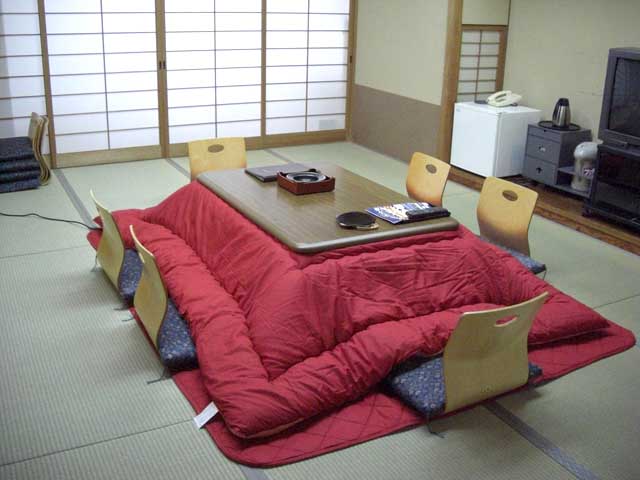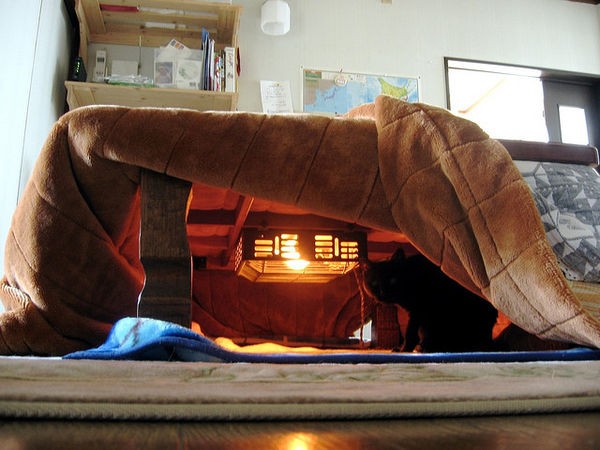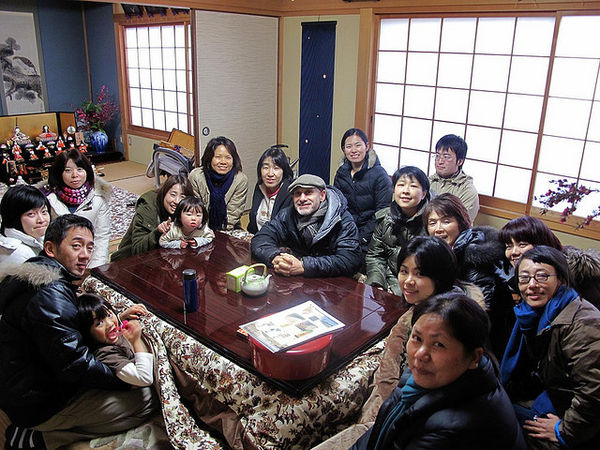Have you ever seen in Japanese anime and dramas at a small and low table sitting and warmed by a blanket? In this article we are going to talk about this table with a heater called kotatsu, a table with a warm blanket.
A Kotatsu is a low wooden table with a heat source underneath, often used in Japan during the colder months. It is usually covered with a heavy blanket, which not only adds warmth, but also makes it more comfortable to sit around.
Kotatsu are used for both relaxation and work, and can be found in homes, offices and restaurants. The blanket table has been used in Japan for centuries, and the tradition continues today.
It is not just a table with heating and blanket, but a cultural invention that unites Japanese families. Several scenes and stories take place with close friends and families using a Kotatsu.
We also recommend reading:
- Tatami - Discover the traditional Japanese floor
- Family - Members of the family in Japanese
- Why Japanese Women Don't Shave Pubic Hair?
Índice de Conteúdo
What is a Kotatsu?
The kotatsu [炬燵] or [コタツ] is a small, low table (to fit the legs of people sitting around it) with a small electric heater connected below the table. This table is perfect for warming up in the cold of winter.
The kotatsu has a thick quilt or comforter called a kakebuton [掛け布団]. It is used to conserve heat and keep warm, and to prevent hot air from escaping. There is also a mat called a jiki [敷き] under the table.
This quilt is composed of 2 blankets called shitagake and another heavier one known as kotatsu-gake . The name kotatsu [炬燵] literally means hot feet. This is just one of thousands of Japanese inventions against the cold.
The person should sit on the floor or on zabuton cushions with the legs under the table and the blanket spread over the lower part of the body. It is designed to be worn with traditional clothing that is open, allowing heat to rise from the legs to the neck.

How did Kotatsu come about?
The Kotatsu was invented in the 14th century in the Muromachi Period and can be found in most Japanese homes during the winter season. Originally his heater was a coal pit that was built into the floor.
Read also: What's in a traditional Japanese home?
The kotatsu emerged as a kind of evolution of the irori, a sunken hearth used to heat the house and cook food. Its predecessor, called the hori-gotatsu [掘り炬燵], was a table with a hole in the floor to warm the feet.
Thus came the kotatsu that can be mobile instead of staying in one place in the case of hori-gotatsu . In the old days, kotatsu was heated over a pot of charcoal. Currently it is heated through electricity.
In addition to electric, today you can still find coal heating in traditional places, which can be placed in a hole in the ground or in another place, passing the heat through some path.

What are the advantages of Kotatsu?
Kotatsu are much loved by the Japanese, especially in cold regions. Families and friends often sit around the table to study, eat meals, drink or watch television together.
The cobertor covers half of its body, keeping you warm in the winter. Some even sleep inside the cobertor, but it is not advisable because of the heater and temperature imbalance. Only pets do this.
Many Japanese houses are not properly prepared against the winter, not everyone finds it cheap to create insulation and heating in the house because it lacks structure and is very expensive.
Buying a Kotatsu is an inexpensive alternative for those wanting to stay warm in winter. Not to mention, the Kotatsu can be used as a regular table during the summer, just remove the blankets.

There are similar systems in countries around the world: economic and often sociable ways to heat up while standing still. In Spain and Portugal, they have a round table with a brazier called Camilla.
In the Netherlands it is also customary to use a foot stove. In World War I, British Engineers built 'Japanese foot warmers' in the trenches. Tajikistan, Afghanistan and Iran also have their similar creations.
Is that you? Have you ever had the opportunity to use this warm table? What was your experience? Don't forget to share with your friends and leave your comments. I wish in Brazil it was cold for us to need a warm table like that.





